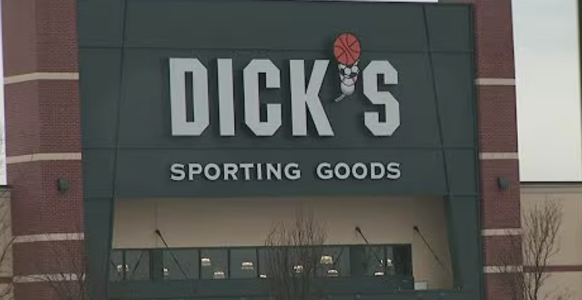Two big names are merging in a $2.4B deal—and it could change how you shop for sneakers
- Replies 0
In the fast-changing world of retail, big moves don’t always make big headlines.
But behind the scenes, a multibillion-dollar deal is unfolding between two familiar names.
It’s a power play that could reshape how millions of customers buy athletic gear.
And not everyone is convinced it’s a winning combination.
Dick’s Sporting Goods is set to buy Foot Locker for $2.4 billion.
Dick’s is the largest sports retailer in the U.S., known for its strong domestic presence.
However, it lacks global reach, something Foot Locker brings to the table.
Foot Locker operates 2,400 stores across 20 countries, despite recent financial struggles.
The acquisition gives Dick’s access to Foot Locker’s more urban customer base, including fans of basketball and sneaker culture.
According to Cristina Fernández of the Telsey Advisory Group, this complements Dick’s current market of athletes and suburban families.
Still, investors weren’t sold on the strategy.
Dick’s stock dropped over 14% after the announcement, largely due to Foot Locker’s recent store closures and declining sales.
Ed Stack, Executive Chairman of Dick’s, addressed those concerns in a public statement.
He said the company has “long admired the cultural significance” that Foot Locker built.
“We believe there is meaningful opportunity for growth ahead,” Stack noted.
He added that combining both brands will allow them to better serve the “evolving needs of global sports retail consumers.”
The deal isn’t just about expanding shelves.
It also brings new challenges, including tariffs on imported footwear and the pressure of direct-to-consumer sales from big brands like Nike and Adidas.
These brands have increasingly cut out middlemen to sell shoes directly to customers.
That trend could impact both Dick’s and Foot Locker’s long-term strategies.
Still, Foot Locker CEO Mary Dillon expressed confidence in the merger.
“By joining forces with Dick’s, Foot Locker will be even better positioned to expand sneaker culture,” she said.
She also emphasized plans to enhance the omnichannel experience for both customers and brand partners.
That means better integration between in-store and online shopping.
Dick’s confirmed that Foot Locker will continue operating under its own name after the deal closes.
The acquisition is expected to finalize in the second half of 2025.
It still requires approval from Foot Locker shareholders and government regulators.
If approved, the deal could reshape the landscape of sportswear and sneaker retail.
Also read:

Will this mega-merger change where you shop for shoes and sports gear? Do you think Dick’s and Foot Locker are stronger together—or is this a risky move? Drop your thoughts in the comments—your take might echo what other shoppers are thinking, too.
But behind the scenes, a multibillion-dollar deal is unfolding between two familiar names.
It’s a power play that could reshape how millions of customers buy athletic gear.
And not everyone is convinced it’s a winning combination.
Dick’s Sporting Goods is set to buy Foot Locker for $2.4 billion.
Dick’s is the largest sports retailer in the U.S., known for its strong domestic presence.
However, it lacks global reach, something Foot Locker brings to the table.
Foot Locker operates 2,400 stores across 20 countries, despite recent financial struggles.
The acquisition gives Dick’s access to Foot Locker’s more urban customer base, including fans of basketball and sneaker culture.
According to Cristina Fernández of the Telsey Advisory Group, this complements Dick’s current market of athletes and suburban families.
Still, investors weren’t sold on the strategy.
Dick’s stock dropped over 14% after the announcement, largely due to Foot Locker’s recent store closures and declining sales.
Ed Stack, Executive Chairman of Dick’s, addressed those concerns in a public statement.
He said the company has “long admired the cultural significance” that Foot Locker built.
“We believe there is meaningful opportunity for growth ahead,” Stack noted.
He added that combining both brands will allow them to better serve the “evolving needs of global sports retail consumers.”
The deal isn’t just about expanding shelves.
It also brings new challenges, including tariffs on imported footwear and the pressure of direct-to-consumer sales from big brands like Nike and Adidas.
These brands have increasingly cut out middlemen to sell shoes directly to customers.
That trend could impact both Dick’s and Foot Locker’s long-term strategies.
Still, Foot Locker CEO Mary Dillon expressed confidence in the merger.
“By joining forces with Dick’s, Foot Locker will be even better positioned to expand sneaker culture,” she said.
She also emphasized plans to enhance the omnichannel experience for both customers and brand partners.
That means better integration between in-store and online shopping.
Dick’s confirmed that Foot Locker will continue operating under its own name after the deal closes.
The acquisition is expected to finalize in the second half of 2025.
It still requires approval from Foot Locker shareholders and government regulators.
If approved, the deal could reshape the landscape of sportswear and sneaker retail.
Also read:
- One day, zero warehouses?! Why Costco’s taking a breather…and why you have to say goodbye to some other stores too.
- Boycott begins at Target amid concerns over rising checkout costs
Key Takeaways
- Dick’s Sporting Goods is acquiring Foot Locker for $2.4 billion in a move to expand its global presence.
- Foot Locker has 2,400 stores in 20 countries, but has faced recent declines in sales and store closures.
- Investors reacted cautiously, dropping Dick’s stock by over 14% following the announcement.
- Foot Locker will continue operating under its own name, pending regulatory and shareholder approval later this year.
Last edited:







